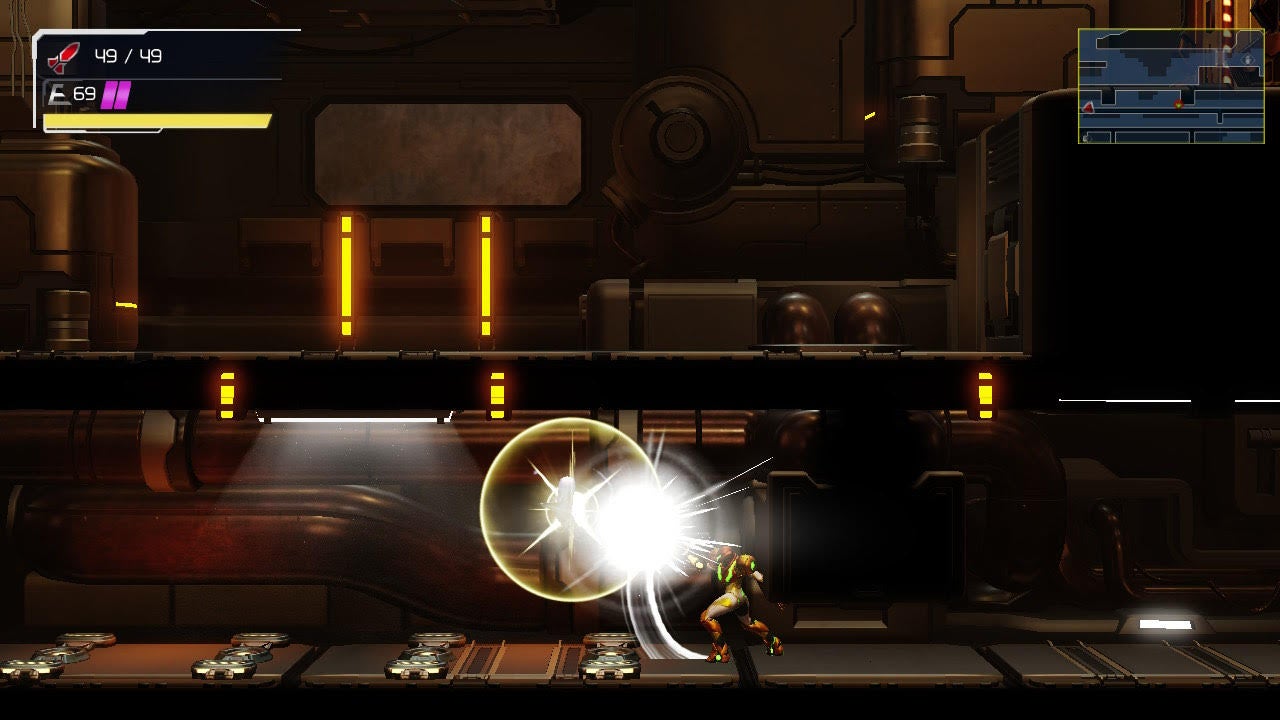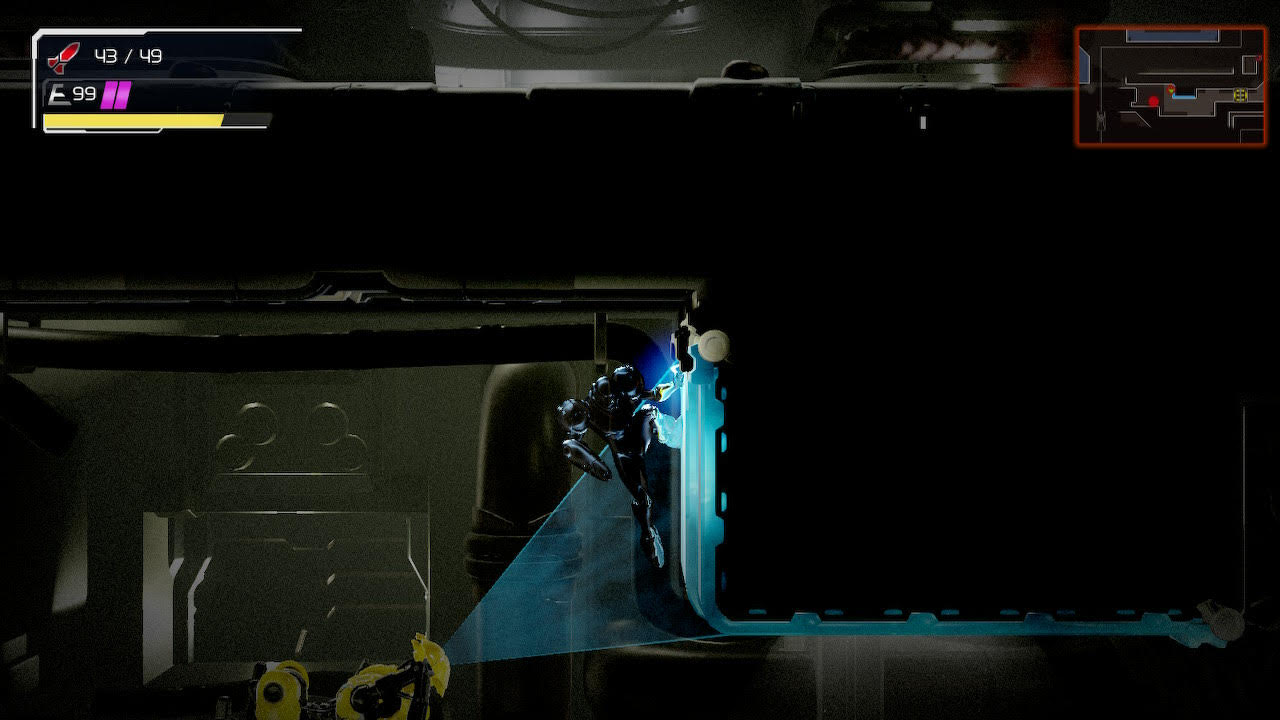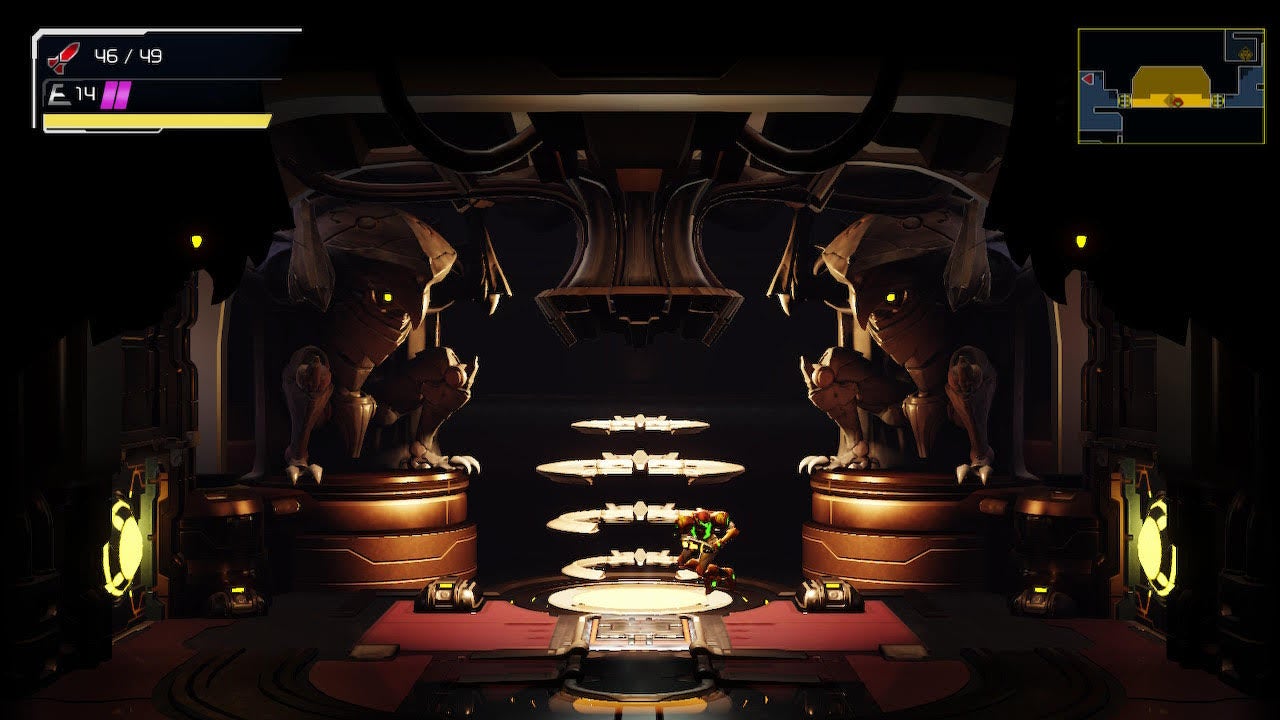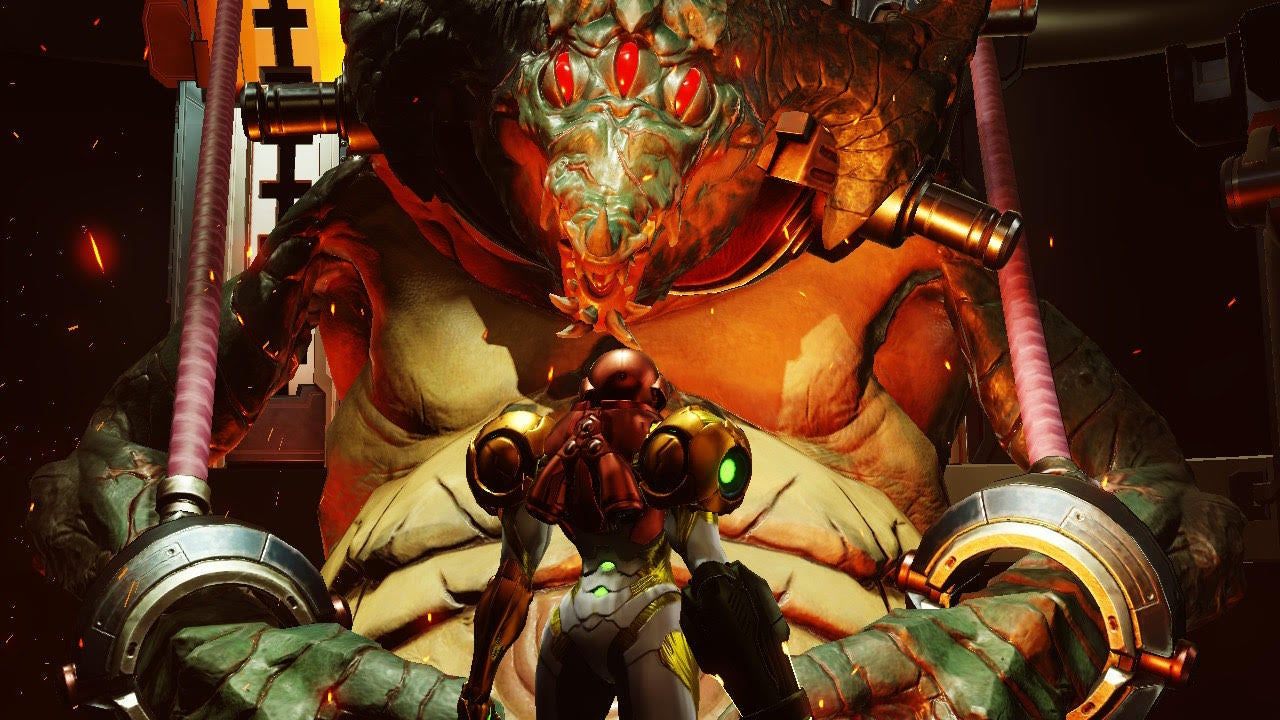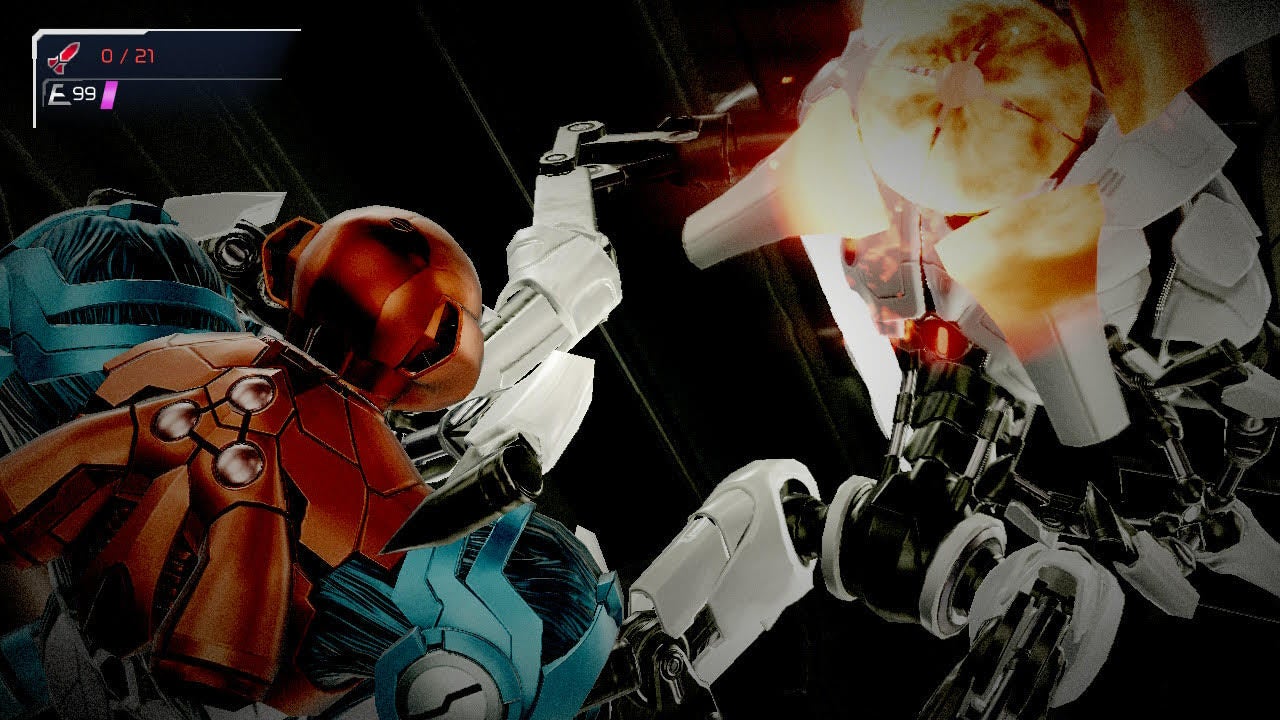For all that, though, it’s not as if Metroid’s ever really been away. Indeed, in many ways Yoshio Sakamoto’s series has been inescapable in recent years, the Metroidvania genre cast partly in its likeness reaching near ubiquity thanks to the likes of the sumptuous Ori, the melancholic, hard-edged Hollow Knight or the perfectly pitched pixel charm of Axiom Verge. How exactly can Nintendo and Mercury Steam make up for that prolonged absence, whilst making sure Metroid remains relevant to an audience that’s gorged on its imitators? One way is to ensure it’s as lavish a production as possible. Metroid Dread is a project first conceived and teased in the immediate aftermath of Metroid Fusion - passing mention of it was even made deep within the text logs of Metroid Prime 3 - until Sakamoto put it on hold, waiting on the technology to fulfil his vision of a more fear-filled take on the series. It’s achieved that - and how - with what is somehow the first HD take on the series, a 2D adventure that’s told with frequently astounding triple-A spectacle. Metroid Dread is akin to Retro Studio’s Donkey Kong Returns series in that way, its side-on action superimposed on a 3D world dense with detail and ambience, only that character and detail is here serving a different, icier purpose. This is a sumptuous thing, the planet of ZDR which Samus embarks on in her ongoing pursuit of the X parasite providing the backdrop to what amounts to one of the finest looking games on the Switch. There are abandoned laboratories lined with partly-assembled bots, whale-sized corpses opened-up on autopsy tables and dark, sparking corridors that connect caverns brimming with lava, all gloriously lit and moodily conveyed. Perhaps the finest praise I can lay upon Metroid Dread’s world is that, in atmosphere and splendour, it’s easily the measure of Super Metroid’s Zebes or Metroid Prime’s Tallon IV - no mean feat, really. Mercury Steam certainly leaves its own impression on the formula, though, for what’s a pleasingly distinct Metroid. If the Spanish developer was somewhat hamstrung with its first effort - a remake of the curious if not exactly spectacular Game Boy outing Metroid 2 - in Metroid Dread it retains some of those unique attributes and repurposes them into something more meaty, and more meaningful. Like Samus Returns this is a Metroid that’s heavy on combat, only this time out it’s more fluid and less staccato, the counter which you’re constantly pushed to call upon now carrying a bit of forward momentum. Like Samus Returns, this is also a Metroid with its own tempo and flavour, this time lent by the Emmi robots that patrol certain parts of the map. Near-invincible and relentless in their pursuit of you once you’ve been spotted on their turf, they provide a neat counterpoint to the exploration, and when you do find the one shot weapon within each area that can fell them there’s a neat lift from Metroid: Other M as the action shifts to an over-the-shoulder view. It’s impressive, empowering stuff. Emmi zones provide the thrilling core of each of Metroid Dread’s areas, but beyond that there’s still plenty of the slowburn exploration and gradual unlocking through upgrades that’s the series’ bread and butter. The planet ZDR provides a neatly recursive map that you dance around like a busy spider, scuttling from power up to power up that gently push that spiral outwards. Which is to say the map is a beautifully designed thing, intricate and dense, plotted with the utmost care. Is it the measure of other great Metroidvania maps? Time - say another 20 years and change - will tell whether it’s truly up there with Super Metroid’s Zebes and Fusion’s Space labs, but for now I appreciate Metroid Dread for bringing something of its own to the formula, serving up a unique flavour I certainly found to my taste. The exploration is a little more free form, but as a result the backtracking is pronounced - though you are afforded tools that make it all that bit easier, from a map that’s brilliantly useful, allowing you to lay down waypoints or highlighting all doors that might be vulnerable to your newly acquired weapon. Possibly in response to her portrayal in Metroid Other M - or maybe just because this is a game that really gets what makes Samus iconic - our heroine has never been more badass, a cocky jaunt to her pose as she nonchalantly heads up against villains old and new. Perhaps most pertinently, Metroid Dread’s Samus feels like a battle-hardened veteran, with a swagger in her step to match. It helps that this is the most dynamic Samus has felt in a Metroid game to date. There’s a fluidity to her movement - helped by the 60fps frame rate, a noticeable step up from Samus Returns - and a dynamism to her move set that makes the simple of getting from A to B an absolute pleasure. Apart from when it’s a pain, either through the constant butting against walls that comes with the territory with the Metroidvania genre - this is a smoother example than most, thanks to that tooled-up map that’s always to hand, but that didn’t stop me losing half a day blindly firing missiles at every surface before seeing the blindingly obvious path forward reveal itself. More often that’s by design, though, with the Emmi zones putting a necessary spring in your step and sending your pulse skyward as the scuttling robots hunt you down. Somewhat ironically these machines give Metroid Dread an organic edge - with their own behaviours and paths, the Emmis can make this a game that feels positively alive. Do they make for the best 2D Metroid to date? You’ll have to give me more than a handful of replays and some sizeable distance for me to commit either way, but what I can say is this: here’s a game that’s worthy of the lineage, that’s as exquisitely designed and that feels just as bold in its innovations as previous entries. This is a modern Metroid, a 2D adventure delivered with triple-A panache, yet one that retains the grace and poise that’s always marked the highlights of this series, and marked it out from its many imitators. How blessed we are to have Samus properly back, and what a marvel it is to be reminded how special Metroid can be. The wait, I’m delighted to say, was somehow worth it.

